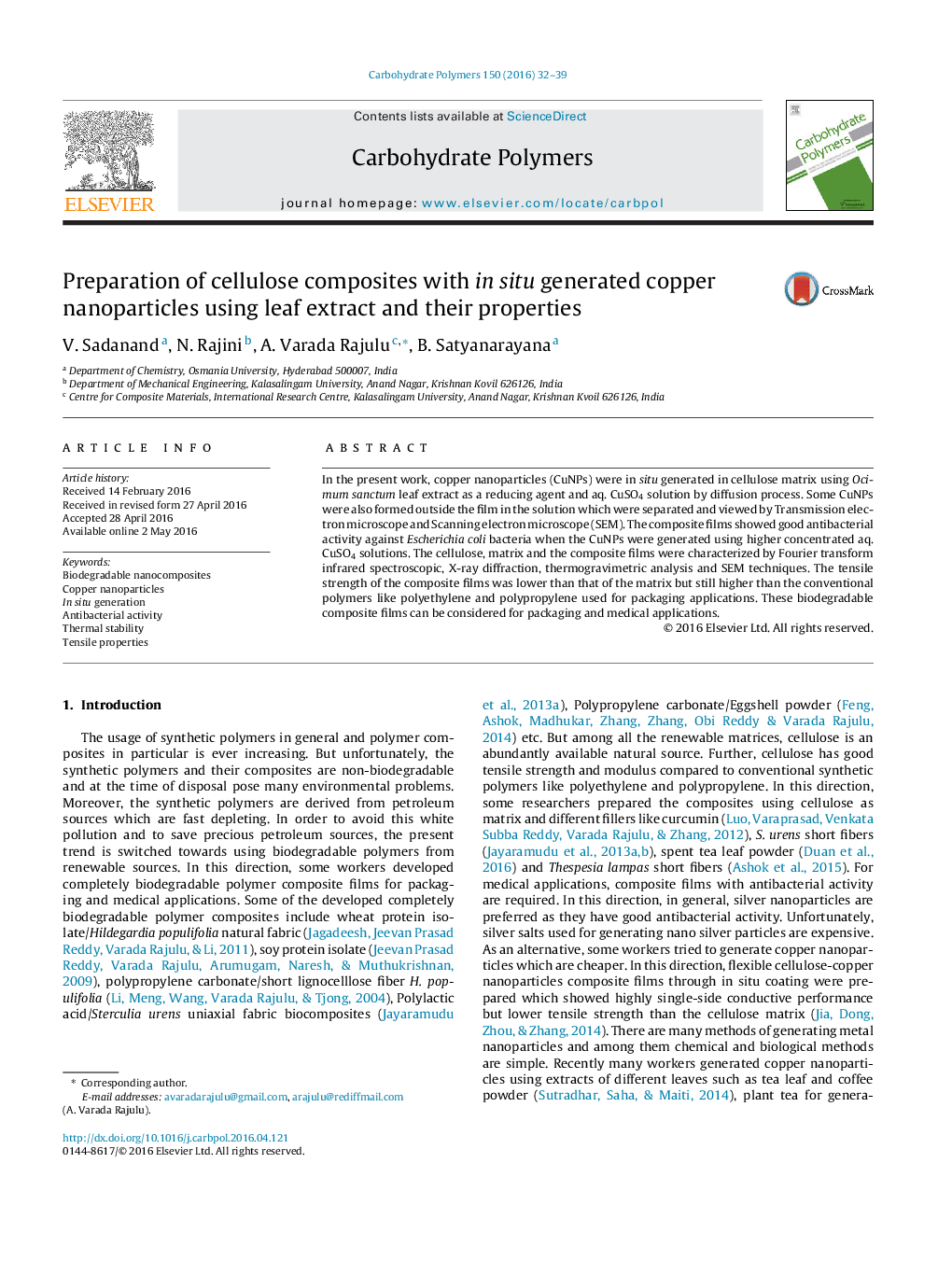| کد مقاله | کد نشریه | سال انتشار | مقاله انگلیسی | نسخه تمام متن |
|---|---|---|---|---|
| 1384810 | 1500608 | 2016 | 8 صفحه PDF | دانلود رایگان |
• Using in situ method, CuNPs were generated inside cellulose films.
• Ocimum sanctum leaf extract was used as the reducing medium.
• The composite films had both unoxidised and oxidized copper nanoparticles.
• The composite films showed antibacterial activity.
• The composite films can be considered for packaging and medical applications.
In the present work, copper nanoparticles (CuNPs) were in situ generated in cellulose matrix using Ocimum sanctum leaf extract as a reducing agent and aq. CuSO4 solution by diffusion process. Some CuNPs were also formed outside the film in the solution which were separated and viewed by Transmission electron microscope and Scanning electron microscope (SEM). The composite films showed good antibacterial activity against Escherichia coli bacteria when the CuNPs were generated using higher concentrated aq. CuSO4 solutions. The cellulose, matrix and the composite films were characterized by Fourier transform infrared spectroscopic, X-ray diffraction, thermogravimetric analysis and SEM techniques. The tensile strength of the composite films was lower than that of the matrix but still higher than the conventional polymers like polyethylene and polypropylene used for packaging applications. These biodegradable composite films can be considered for packaging and medical applications.
Journal: Carbohydrate Polymers - Volume 150, 5 October 2016, Pages 32–39
